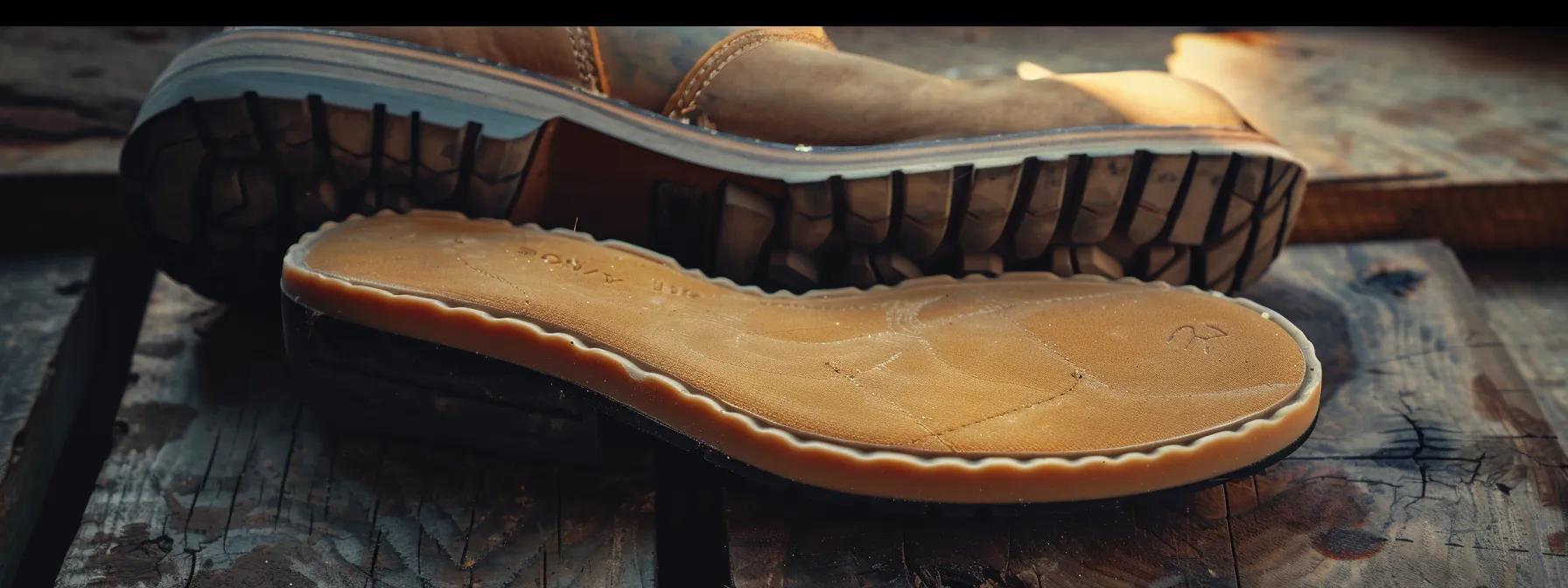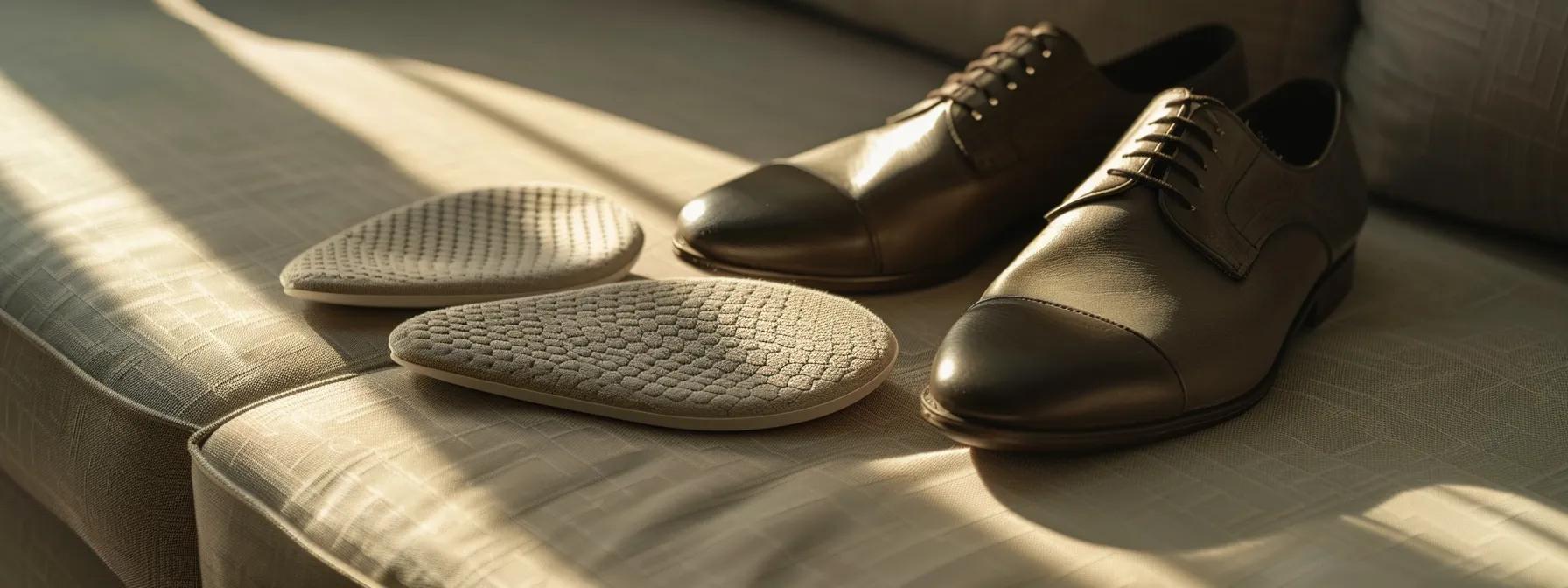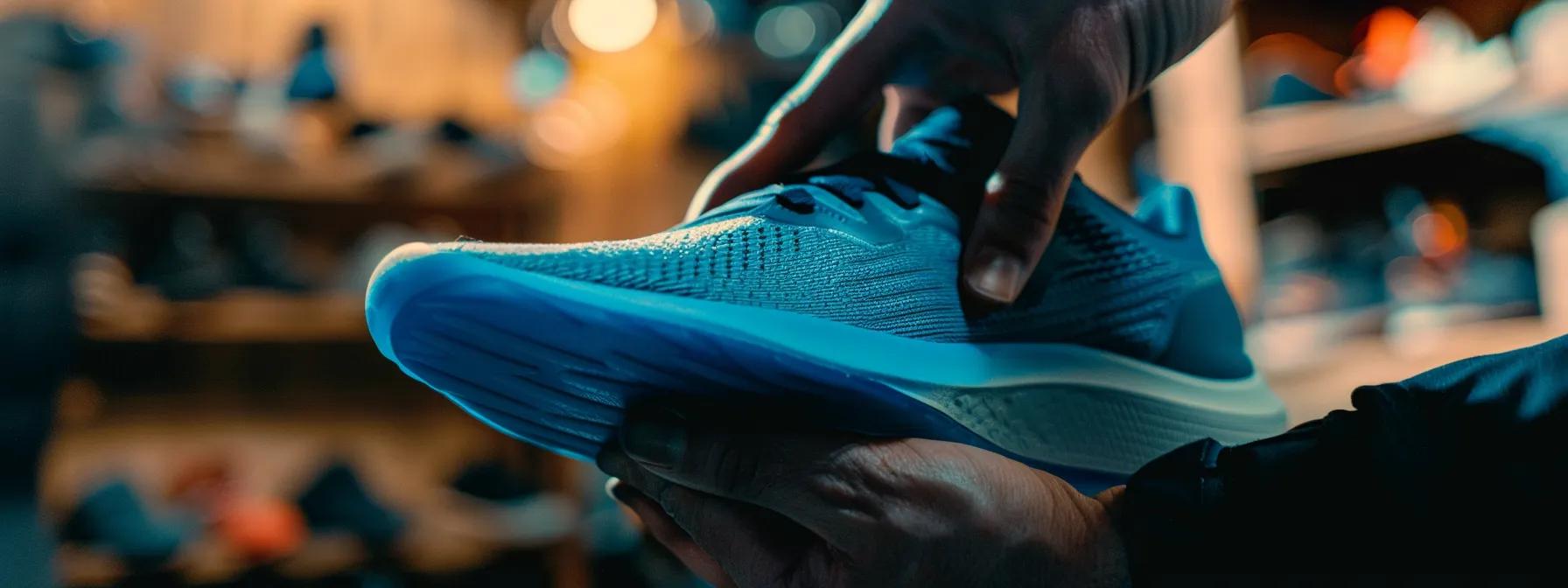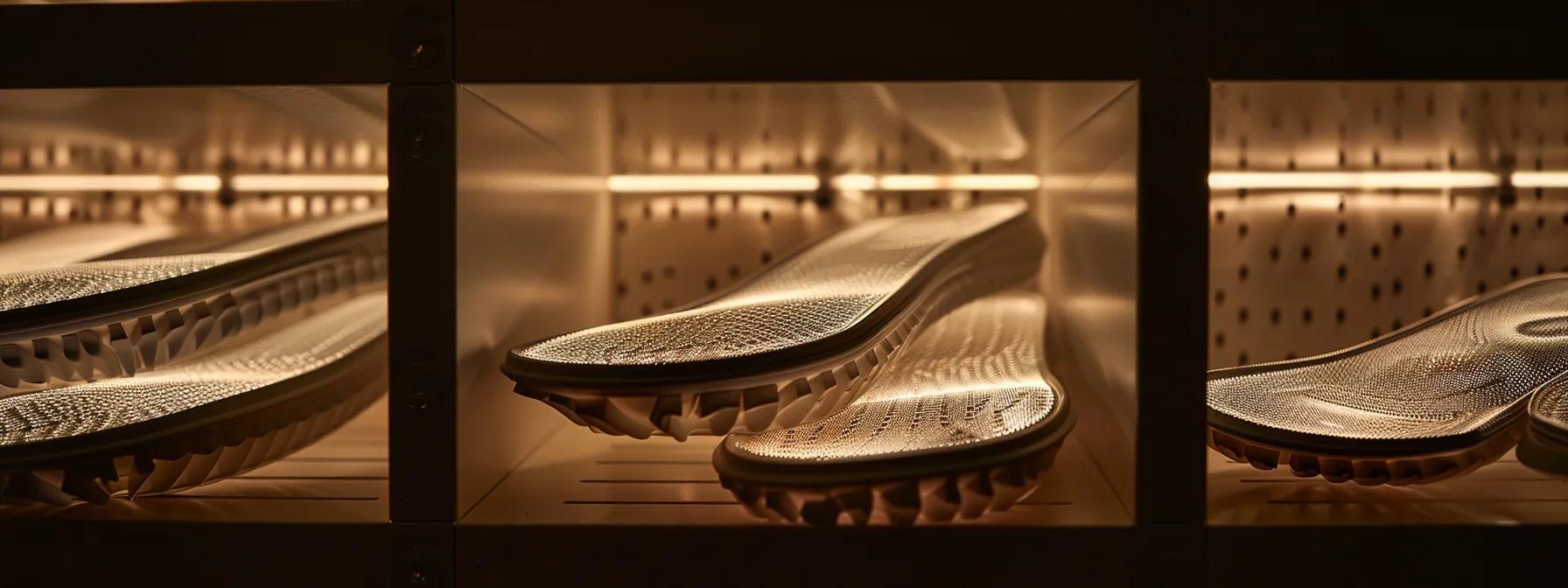Maximize Comfort with Effective Foot Support Insoles Today

Maximizing Comfort: The Role of Foot Support Insoles
Have you ever considered how the right insoles could transform your daily comfort? This article delves into the pivotal role of foot support insoles, particularly for those with flat feet or low arches who engage in regular exercise. We’ll guide you through selecting the best over-the-counter insoles tailored to your unique needs and demonstrate how proper fit can alleviate common foot discomforts. By investing in quality insoles, you’re not just cushioning your steps; you’re taking a proactive stance in maintaining your foot health and overall well-being. Join us as we explore how to maximize your comfort and keep your feet supported, whether you’re hitting the gym or just going about your day.
Recognize the Importance of Foot Support Insoles

As a chiropractor, I’ve seen firsthand how flat foot support insoles and inserts for arch pain can transform my patients’ lives. These simple additions to your footwear can alleviate common issues such as metatarsalgia, providing the muscle support necessary for improved foot health. In the following sections, we’ll delve into the specific ways insoles contribute to foot wellness and address typical foot ailments. Opting for memory foam insoles, for instance, can offer both immediate comfort and long-term benefits. Let’s explore the significance of proper foot support and how it can lead to a more active, pain-free lifestyle.
Identify the Ways Insoles Improve Overall Foot Health
In my practice, I’ve observed that foot support insoles play a pivotal role in mitigating discomfort associated with shin splints, by evenly distributing pressure across the footbed. Shoe inserts for flat feet and insoles for collapsed arches provide targeted support, correcting abnormal walking patterns and reducing strain on the lower extremities. This specialized support not only eases immediate pain but also contributes to long-term foot health, preventing further complications and enhancing mobility for my patients.
Understand Common Foot Issues Resolved by Insoles
In my practice, I’ve seen how the right flat foot shoe inserts can offer profound relief for those struggling with ankle instability and discomfort. Whether it’s a dress shoe or a rugged hiking boot, incorporating a well-designed insole can correct imbalances and provide the necessary support to alleviate stress on the feet. This targeted intervention often results in a significant reduction of pain and a noticeable improvement in my patients’ gait, allowing them to engage in daily activities with greater ease and confidence.
Understanding the significance of foot support insoles is the first step. Now, let’s walk through the daily rewards they bring.
Experience the Benefits of Using Foot Support Insoles Daily

In my daily practice, I’ve witnessed the transformative power of foot support insoles in enhancing comfort and well-being. Good feet insoles, specifically designed for high arches or low arches, can significantly alleviate foot fatigue and pain, a common complaint among my patients. For those who enjoy running or other high-impact activities, arch insoles provide the stability and cushioning needed to improve posture and balance. In the upcoming sections, we’ll examine how integrating the right insoles into your daily routine can lead to sustained comfort and support, ultimately contributing to a healthier, more active lifestyle.
Increase Daily Comfort With Proper Foot Support Insoles
In my practice, I’ve found that incorporating flat foot arch support insoles can significantly enhance daily comfort, particularly for individuals experiencing hip pain or heel discomfort. These insoles work by realigning the foot’s structure, distributing weight more evenly, and providing a stable foundation that can alleviate pain and prevent further injury. My patients often report a noticeable improvement in their pain management and overall foot health, which underscores the importance of selecting the right insole for one’s specific needs.
Alleviate Foot Fatigue and Pain Using Support Insoles
In my experience, the strategic use of foam orthotics insoles can be a game-changer for those suffering from foot fatigue and pain. These shoe inserts, with their superior cushioning, adapt to the contours of your feet, providing relief right from the toe box to the heel. I’ve seen patients who once winced with every step now walk with ease, thanks to the personalized support and comfort that these insoles deliver. It’s not just about temporary relief; it’s about creating a stable foundation for long-term foot health.
Improve Posture and Balance Through Correct Insoles
In my practice, I’ve observed that wearing the correct orthotics for feet can significantly improve posture and balance. These insoles act as a shock absorber, reducing the impact on the knees and aligning the lower body to prevent overcompensation and strain. For instance, a patient with a pronated gait experienced less knee pain and improved stability after I recommended carbon fiber orthotics, which provided the rigid support necessary to correct their foot alignment. This kind of targeted intervention is crucial for anyone looking to maintain an active lifestyle without discomfort.
Daily use of foot support insoles can transform your stride and comfort. Now, let’s find the insoles that fit your feet like they were made just for you.
for maximum comfort and support.
Select the Right Insoles for Your Foot Needs

Choosing the right foot support insoles is crucial for comfort and health. Whether you need flat foot insoles to alleviate tendinopathy or insoles for flat shoes that provide extra cushioning during hiking, understanding your foot type and support requirements is the first step. In the sections that follow, we’ll compare various insole options and discuss the importance of professional guidance in selecting the ideal insole for your unique needs. With my expertise, I’ll help you navigate the choices to ensure your feet receive the best possible care.
Determine Your Foot Type and Support Requirements
In my practice, I emphasize the importance of understanding your foot’s unique shape and how it interacts with various types of footwear, such as sneakers, to combat fatigue effectively. For those with specific conditions like overpronation, orthotic insoles for overpronation can offer the corrective support needed to realign your stride. When considering custom orthopedic insoles, it’s essential to assess not just the arch height but also the flexibility and gait pattern, ensuring the insoles you select provide tailored support that matches the intricacies of your feet, leading to enhanced comfort and mobility.
Compare Different Types of Foot Support Insoles
In my practice, I’ve seen a diverse range of foot support insoles, each designed to address specific issues like shin splint pain or hip discomfort. Customized insoles for flat foot conditions, for example, are tailored to provide the precise level of arch support needed to alleviate stress on the foot’s structure. On the other hand, over-the-counter insoles for flat feet might offer a general cushion but lack the personalized fit that can significantly reduce pain and improve function. It’s essential to compare these options, considering factors such as material, design, and intended use, to ensure you select insoles that will offer the most benefit for your unique foot needs.
Seek Professional Guidance for Insole Selection
In my practice, I’ve learned that the journey to finding the perfect insole is as unique as your shoe size and the contours of your toes. Whether you’re lacing up a boot for a day on the trails or slipping into your favorite pair of shoes for a night out, the right insole can make all the difference. I recommend seeking professional guidance to navigate the myriad of options, from gel to foam, and across various brands, ensuring a fit that’s tailored to your individual needs. This personalized approach not only enhances comfort but also supports your overall foot health, allowing you to step forward with confidence.
Choosing the right insoles is only the beginning. Now, let’s tackle how to ease those persistent foot troubles with the proper support. For those seeking tailored solutions, consider the benefits of custom orthotics 3D laser scanned for maximum comfort and support.
Relieve Common Foot Issues With Support Insoles

In my practice, I’ve found that addressing plantar fasciitis symptoms with the right insoles can be a game-changer for foot comfort. Proper insoles can also ease arch and heel pain, providing relief where it’s needed most. For those with flat or high arches, specialized insoles are key to maintaining balance and preventing foot odor, a common issue exacerbated by inadequate footwear. We’ll explore how integrating these solutions into your daily routine, along with the right socks, can significantly improve your foot health and comfort. Custom orthotics 3D laser scanned for maximum comfort and support.
Address Plantar Fasciitis Symptoms With Insoles
In my practice, I’ve found that the best flat foot insoles can offer significant relief for those suffering from plantar fasciitis, a condition often characterized by sharp heel pain. By providing the right length and arch support, these insoles can distribute pressure more evenly across the foot, reducing the strain on the plantar fascia. For patients who spend long hours on their feet or enjoy running, a pair of new balance insoles integrated into their shoes can be a critical component of their foot health strategy, offering both immediate comfort and preventative care.
Ease Arch and Heel Pain Using Proper Insoles
In my practice, I often recommend the best insoles for flat feet to patients grappling with arch and heel pain. These insoles are designed to alleviate muscle fatigue and correct gait abnormalities, providing targeted relief and support. As a podiatrist, I’ve seen how the right insole can transform a patient’s walking experience, reducing discomfort and enhancing stability with every step they take.
Support Flat or High Arches With Specialized Insoles
In my practice, I’ve found that specialized insoles are essential for individuals with flat or high arches, as they provide the necessary support to maintain proper foot alignment and distribute weight evenly. These insoles are not just about cushioning; they’re about creating a foundation that adapts to the unique structure of your feet, preventing the common discomforts associated with arch abnormalities. By guiding my patients towards the right insoles, I’ve seen remarkable improvements in their daily comfort and a decrease in the stress on their joints, leading to a more balanced and pain-free lifestyle.
Now you know the relief that support insoles can bring. Let’s walk through fitting them correctly, step by step.
Fit Foot Support Insoles Properly Step by Step

Ensuring your foot support insoles fit correctly is a critical step in maximizing comfort. In my practice, I guide patients through measuring their feet accurately for insole sizing, placing insoles correctly inside their footwear, and making necessary adjustments for optimal comfort and support. These steps are fundamental in enhancing the effectiveness of your insoles, and I’ll be sharing insights on each to help you achieve the best possible fit.
Measure Your Feet Accurately for Insole Sizing
In my practice, I stress the importance of precise foot measurements for insole sizing, as this ensures the insoles provide the correct support and fit snugly within your shoes. To measure your feet accurately, I recommend standing on a piece of paper and tracing the outline of each foot, followed by measuring the length and width. This simple yet crucial step can make a significant difference in the effectiveness of your foot support insoles, leading to enhanced comfort and reduced risk of foot-related issues.
Place Insoles Correctly Inside Your Footwear
Proper placement of foot support insoles within your footwear is a critical step I guide my patients through to ensure maximum comfort and effectiveness. Once you have the right size, insert the insole into your shoe, making sure it sits flush against the contours of the interior. It’s essential that the heel of the insole aligns perfectly with the heel of your shoe; this alignment is key to providing the stability and support your feet need. I’ve seen many patients experience immediate relief once their insoles are positioned correctly, as it helps to distribute weight evenly and reduce pressure points.
Adjust Insoles for Maximum Comfort and Support
In my practice, I’ve learned that fine-tuning your insoles can make a substantial difference in your daily comfort. Once you’ve placed your insoles correctly, walk around and pay attention to how your feet feel. If you notice any discomfort or areas where support is lacking, don’t hesitate to trim the insoles for a better fit or add padding where necessary. This personalized adjustment process is crucial for achieving the maximum comfort and support that your feet deserve, ensuring you can move through your day with ease and without pain.
Your insoles fit snugly now; they mold to your feet like a second skin. Let’s keep them in fighting shape, ready for the long haul ahead.
Maintain and Care for Your Foot Support Insoles

In my practice, I emphasize the importance of maintaining your foot support insoles to maximize their effectiveness and longevity. Regular cleaning is essential to prevent odor and bacteria buildup, while being vigilant about wear and tear ensures timely replacement for optimal foot health. Proper storage also plays a crucial role in extending the lifespan of your insoles. In the following sections, we’ll explore these maintenance practices in detail, providing you with practical advice to keep your insoles in top condition.
Clean Insoles Regularly to Prevent Odor and Bacteria
In my practice, I stress the significance of routinely cleaning your foot support insoles to prevent the growth of odor-causing bacteria. This simple act of maintenance not only preserves the freshness of your footwear but also extends the life of the insoles themselves. I advise my patients to gently wash their insoles with mild soap and water, allowing them to air dry completely before placing them back into their shoes. This proactive approach to insole care is essential for maintaining a hygienic and comfortable shoe environment, contributing to overall foot health.
Replace Insoles When They Show Signs of Wear
In my practice, I advise patients to replace their foot support insoles at the first signs of wear, such as visible thinning or loss of shape. This is crucial because worn insoles can no longer provide the necessary support and cushioning, potentially leading to discomfort and exacerbating foot conditions. By staying vigilant and updating your insoles regularly, you ensure ongoing comfort and maintain the health benefits that come with proper foot alignment and support.
Store Insoles Properly to Extend Their Lifespan
In my practice, I advise patients to store their foot support insoles in a cool, dry place away from direct sunlight to preserve their shape and material integrity. Proper storage not only extends the lifespan of the insoles but also ensures they maintain their supportive properties, providing consistent comfort and foot alignment. By taking this simple step, you can safeguard the quality of your insoles, ensuring they continue to contribute to your overall foot health and comfort.
Conclusion
Foot support insoles are essential for alleviating pain, correcting gait, and enhancing overall foot health. By providing targeted support, they address specific foot issues, such as plantar fasciitis and arch discomfort, improving posture and balance. Selecting the right insoles, with professional guidance, ensures a personalized fit that maximizes daily comfort and mobility. Proper maintenance and timely replacement of insoles are key to sustaining their benefits and supporting an active, pain-free lifestyle. For those interested in a comprehensive approach to foot health, exploring options like custom orthotics could offer additional benefits.





